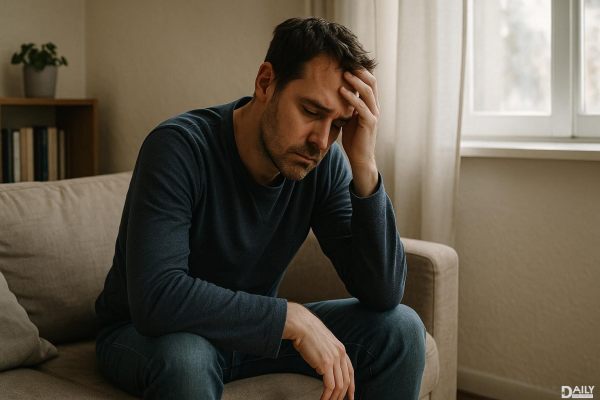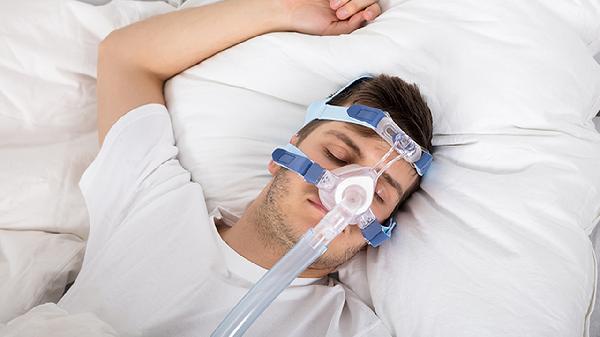Lewis Capaldi's raw honesty about his struggles with hypochondria—or illness anxiety disorder—in his new Netflix documentary has sparked a much-needed conversation about this often-misunderstood condition. The Grammy-nominated artist’s candid revelations highlight how the relentless pressures of fame can amplify mental health challenges, especially for someone already prone to catastrophic thinking about their health. But beyond the glitz of celebrity life, Capaldi’s story resonates with millions who silently battle the same relentless "what if?" scenarios about their bodies. Let’s unpack what hypochondria really looks like, why it’s more than just "Googling symptoms," and how to reclaim peace of mind when your brain insists you’re one WebMD search away from a terminal diagnosis.
The Hypochondria Paradox: When Your Brain Betrays Your Body
Imagine this: You feel a twinge in your side, and suddenly you’re convinced it’s organ failure—despite three doctors assuring you it’s just a pulled muscle. That’s the cruel irony of illness anxiety disorder. Your mind weaponizes normal bodily functions (hello, random heart palpitations after coffee) into proof of impending doom. Unlike general health concerns that fade with reassurance, hypochondria digs its heels in. "The brain misinterprets benign signals as threats," explains Dr. Brown. "It’s like having a hyperactive smoke detector that screams 'FIRE!' every time you toast a bagel." This glitch in the anxiety circuitry means sufferers often dismiss medical tests while fixating on worst-case scenarios—a mental loop Capaldi described when he canceled a show fearing undiscovered illness. The disorder thrives on ambiguity; the absence of a diagnosis doesn’t bring relief, but fuels more "But what if they missed something?" dread.
From Dr. Google to Doomscrolling: The Modern Hypochondria Trap
Before the internet, hypochondriacs had to haunt medical libraries or pester their GP. Now? A single symptom can spiral into a 3 a.m. deep dive into fringe medical forums. "Online symptom checkers are gasoline on the anxiety fire," says Dr. Gallagher. Algorithms prioritize rare conditions (because clicks), so a headache becomes a brain tumor, indigestion morphs into cardiac arrest. The more you search, the more your brain reinforces the "I’m sick" narrative through confirmation bias—cherry-picking data that aligns with your fear while ignoring evidence to the contrary. Capaldi’s reliance on his mom as a reality check mirrors a key coping strategy: creating barriers between yourself and compulsive research. Experts suggest designating a "worry window" (e.g., 10 minutes daily for health research) and using non-triggering sources like the CDC instead of unmoderated sites. Spoiler: Your chances of having that obscure parasite? Lower than getting struck by lightning while winning the lottery.
Breaking the Reassurance Addiction Cycle
Here’s the kicker: Seeking constant reassurance—whether from doctors, loved ones, or negative test results—actually worsens hypochondria long-term. "Every 'See, you’re fine!' temporarily relieves anxiety but trains your brain to fear uncertainty even more," says Dr. Ammon. It’s like scratching a mosquito bite; the momentary relief makes the itch worse later. Exposure therapy flips the script by teaching sufferers to sit with discomfort. Example: If you’re terrified your headache is an aneurysm, resist Googling or checking your blood pressure for progressively longer intervals. Over time, the brain learns that uncertainty doesn’t equal danger. Cognitive behavioral therapy (CBT) also helps challenge distorted thoughts ("This mole changed shape = melanoma") by examining evidence ("Three dermatologists said it’s benign"). For Capaldi, humor became a coping mechanism—joking about his "brain tumor" headaches disrupted the anxiety spiral. As he told The Times, "Laughing at the absurdity of my own mind takes its power away."
When Hypochondria Masks Deeper Wounds
While some develop illness anxiety after a real health scare (or seeing a loved one suffer), others subconsciously use physical symptoms to express emotional pain. Trauma survivors, for instance, may fixate on bodily threats because their nervous system is primed to expect danger. "The body keeps score," notes Dr. Gallagher. "For someone who’s felt powerless in the past, hypervigilance about health can create an illusion of control." This might explain why hypochondria often coexists with OCD or generalized anxiety. Treatment in these cases involves peeling back layers—addressing past trauma while building distress tolerance skills. Support groups (even virtual ones) can also ease the shame; hearing others say, "I thought I was the only one who did 47 skin checks a day" is weirdly comforting. As Capaldi’s documentary shows, naming the beast takes away its secrecy—and that’s the first step toward starving it of power.
Capaldi’s willingness to expose his hypochondria struggles on a global platform does something revolutionary: It normalizes talking about mental health without tidy resolutions. There’s no magic cure for illness anxiety disorder—only the daily practice of trusting your body again, one irrational fear at a time. Whether through therapy, medication, or simply learning to say, "Thanks for the warning, brain, but I’ve got this," recovery looks less like vanishing worry and more like turning down its volume. After all, as any hypochondriac knows, the human body is weird. It cracks, it creaks, it serves up phantom pains after binge-watching Grey’s Anatomy. But most of the time? It’s just being gloriously, messily alive.
























